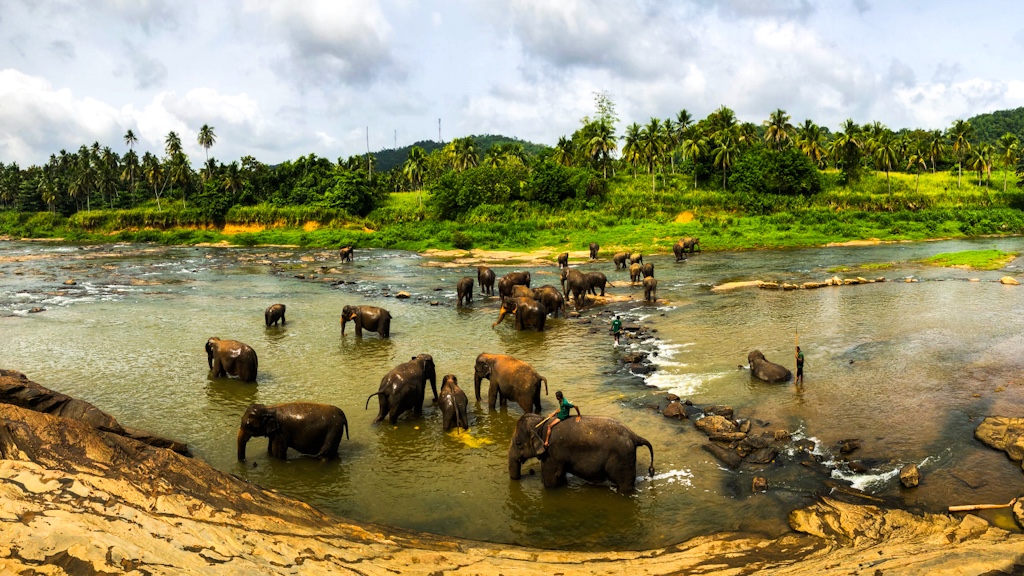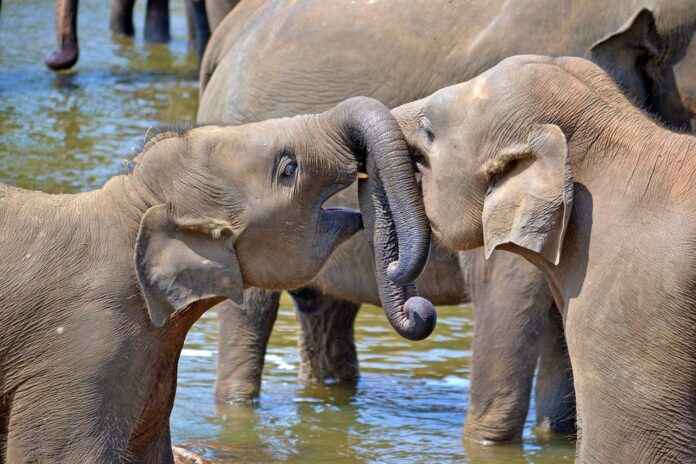Sri Lankan Elephant Population
Elephants have long fascinated and captivated human beings with their majestic presence. One such species, the Sri Lankan elephant (Elephas maximus maximus), holds a significant place in the hearts and minds of people across the globe. In this article, we will delve into the world of Sri Lankan elephants, exploring their habitat, the challenges they face, and the conservation efforts undertaken to protect their population.
Introduction
The Sri Lankan elephant, a subspecies of the Asian elephant, is endemic to the island nation of Sri Lanka. With its unique characteristics and cultural significance, it has become an icon of the country. These gentle giants inhabit a range of environments, including forests, grasslands, and wetlands. Their size, intelligence, and sociability make them a cherished part of Sri Lankan natural heritage.
Habitat and Distribution
Sri Lankan elephants primarily dwell in the dry zone of the country, although they can be found in other regions as well. They have adapted to various ecosystems, ranging from dense forests to open grasslands. The diverse habitats of Sri Lanka provide an ideal environment for elephants to thrive, offering a rich food supply and water sources.
The distribution of Sri Lankan elephants is not uniform throughout the country. They have established home ranges in national parks and protected areas, such as Udawalawe National Park and Minneriya National Park. These areas serve as crucial habitats for their survival, offering both protection and resources.
Threats to Sri Lankan Elephant Population

Despite their cultural significance and ecological importance, Sri Lankan elephants face numerous threats that endanger their population. Human-elephant conflict is a significant issue, arising from the competition for resources and the encroachment of human settlements into elephant habitats. This conflict often results in casualties on both sides and poses a significant challenge to conservation efforts.
Habitat loss and fragmentation due to urbanization, agriculture expansion, and infrastructure development also pose a severe threat to Sri Lankan elephants. As their habitats shrink, elephants face increased isolation, making them more vulnerable to genetic and ecological disruptions. The destruction of natural corridors hampers their movement and can lead to the formation of isolated populations with reduced genetic diversity.
Poaching and illegal trade of elephant parts further exacerbate the challenges faced by Sri Lankan elephants. Despite legal protections and international bans on the ivory trade, these magnificent creatures are still targeted for their tusks and other body parts. The demand for ivory and other elephant-derived products continues to drive illegal activities, posing a grave danger to the survival of Sri Lankan elephants.
Conservation Efforts

Recognizing the importance of conserving Sri Lankan elephants, the government has implemented various initiatives and policies to protect their population. The Department of Wildlife Conservation plays a crucial role in enforcing laws and regulations related to elephant conservation. Strict penalties and fines are imposed on individuals engaged in poaching or illegal trade.
In addition to government efforts, Sri Lanka has established several protected areas and national parks to safeguard elephant habitats. These protected areas serve as safe havens for elephants, allowing them to roam freely and find adequate resources. National parks like Yala, Wilpattu, and Gal Oya are not only tourist attractions but also vital conservation areas for elephants.
Furthermore, community-based conservation projects have emerged as successful models for elephant conservation in Sri Lanka. These projects involve local communities in conservation efforts, promoting coexistence and sustainable practices. By engaging with communities, raising awareness, and providing economic incentives, these initiatives strive to mitigate human-elephant conflict and protect elephant habitats.
Human-Elephant Conflict Mitigation
Efforts to mitigate human-elephant conflict in Sri Lanka involve a combination of strategies. Electric fences and trenches are used to create physical barriers, deterring elephants from entering human settlements. Early warning systems utilizing technology such as sensor-based alarms and SMS alerts help provide timely information to communities, allowing them to take preventive measures.
Crop insurance schemes have also been implemented to compensate farmers for crop damage caused by elephants. These schemes provide a safety net for farmers, reducing the hostility towards elephants and promoting peaceful coexistence. By addressing the socio-economic aspects of human-elephant conflict, these initiatives strive to find sustainable solutions that benefit both humans and elephants.
Economic and Ecological Importance of Sri Lankan Elephants
Sri Lankan elephants play a vital role in maintaining the balance of ecosystems. They act as ecosystem engineers, shaping the environment through their feeding habits and dispersal of seeds. Their browsing behavior helps control vegetation growth, preventing forest encroachment and supporting the diversity of plant species.
Furthermore, Sri Lankan elephants contribute significantly to the country’s tourism industry. Tourists from around the world are drawn to Sri Lanka to witness these magnificent creatures in their natural habitat. Elephant safaris and eco-tourism activities generate income for local communities, providing economic incentives for conservation and fostering appreciation for the natural world.
Challenges and Future Outlook
The conservation of Sri Lankan elephants faces several challenges, including the impact of climate change on their habitats. Rising temperatures, changes in rainfall patterns, and increased frequency of extreme weather events pose a threat to both elephants and their habitats. Adapting to these changing conditions requires innovative approaches and long-term planning.
Ensuring the sustainable development of Sri Lanka while conserving its natural heritage is a delicate balance that needs to be struck. Strategies that promote eco-friendly practices, such as responsible tourism, sustainable agriculture, and renewable energy, can contribute to the conservation of Sri Lankan elephants and their habitats. Collaborative efforts between government agencies, NGOs, and local communities are crucial for the success of these initiatives.
Conclusion
The Sri Lankan elephant population is a national treasure that requires urgent attention and conservation efforts. The challenges they face, including human-elephant conflict, habitat loss, and poaching, necessitate immediate action. Through government initiatives, protected areas, community-based projects, and mitigation strategies, we can strive to ensure the survival and well-being of these magnificent creatures. Preserving Sri Lankan elephants is not only essential for biodiversity conservation but also for maintaining the cultural heritage and economic prosperity of the nation.
FAQs
- Q: Are Sri Lankan elephants different from other Asian elephants?
- A: Yes, Sri Lankan elephants are a subspecies of Asian elephants, with distinct characteristics and behaviors.
- Q: What is the population of Sri Lankan elephants?
- A: The population of Sri Lankan elephants is estimated to be around 6,000 to 7,500 individuals.
- Q: How can I contribute to the conservation of Sri Lankan elephants?
- A: You can support conservation organizations, raise awareness about the challenges they face, and practice responsible tourism when visiting Sri Lanka.
- Q: What are the main causes of human-elephant conflict in Sri Lanka?
- A: Human-elephant conflict in Sri Lanka arises from competition for resources, encroachment of human settlements into elephant habitats, and the destruction of natural corridors.
- Q: How can climate change impact Sri Lankan elephant habitats?
- A: Climate change can lead to changes in rainfall patterns, habitat degradation, and increased frequency of extreme weather events, which can negatively affect elephant habitats and food availability.
